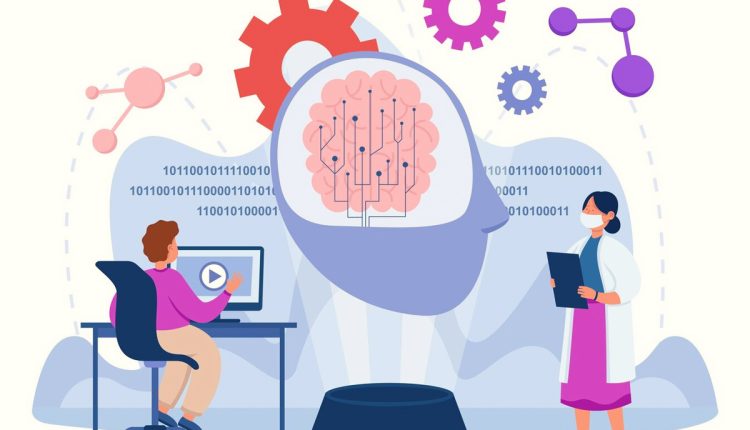Machine learning in HRTech is reshaping how organizations understand and support employee well-being, with dynamic sentiment analysis emerging as a powerful tool in this transformation. By applying machine learning algorithms to text data from employee feedback, surveys, emails, and chat interactions, HR teams can gain real-time insights into employee sentiment, identify patterns, and proactively address concerns before they escalate. This capability enhances HR’s role in promoting a positive work culture, increases engagement, and supports overall employee well-being.
The Rise of Machine Learning in HRTech
As workplaces become more complex and dynamic, machine learning in HRTech allows companies to process and analyze vast amounts of employee data that would otherwise be overwhelming. Traditional methods of gauging employee sentiment, such as annual surveys or sporadic feedback sessions, often fail to capture the nuanced, real-time insights necessary for supporting employee well-being. By integrating machine learning, HR teams can continuously monitor employee sentiment and respond more effectively.
Machine learning algorithms can parse both structured data, like survey responses, and unstructured data, such as text in emails, chat messages, and comments. Sentiment analysis models, in particular, use natural language processing (NLP) to detect emotions expressed in text, identify underlying patterns, and interpret the general sentiment of a team or department. These models can reveal not just surface-level moods but also deeper indicators of stress, satisfaction, or potential disengagement, providing HR with actionable insights.
Dynamic Sentiment Analysis: Moving Beyond Static Surveys
Dynamic sentiment analysis goes a step further than traditional approaches by continuously analyzing and updating sentiment data in real time. Machine learning models trained to recognize linguistic patterns in feedback can track shifts in sentiment on a daily or even hourly basis, which is particularly useful for organizations managing remote or hybrid teams. Rather than waiting for annual surveys to uncover dissatisfaction, HR teams can see instant feedback on workplace changes, new policies, or leadership adjustments, allowing them to make timely interventions.
For instance, suppose an organization implements a new productivity tool, and sentiment analysis detects an uptick in negative sentiment among employees. This could indicate that employees find the tool challenging or burdensome. HR could respond by offering additional training or considering feedback on the tool’s usability. This ability to respond quickly to employee sentiment fosters a supportive work environment where employees feel heard, reducing the risk of burnout or turnover.
Read More: HRTech Interview with Meg Donovan, Chief People Officer at Nexthink
Key Applications of Sentiment Analysis for Employee Well-being
- Identifying Stress and Burnout Indicators: Machine learning models trained to identify keywords associated with stress, exhaustion, or dissatisfaction can flag employees who may be at risk of burnout. For example, frequent mentions of “overwhelmed,” “exhausted,” or “pressured” in feedback or chat interactions can prompt HR to offer support, such as flexible working hours or wellness resources, before issues escalate.
- Enhancing Employee Engagement: By monitoring sentiment, HR can gain insights into employee engagement levels and identify factors that drive motivation or satisfaction. This feedback can inform initiatives to improve workplace culture or recognize employee achievements. For instance, a positive sentiment spike after a team-building activity or recognition program indicates that such initiatives have a beneficial impact, helping HR design more of what works.
- Managing Team Dynamics and Communication: Sentiment analysis can be especially helpful for identifying potential conflicts or communication issues within teams. Machine learning models can detect changes in language that indicate frustration or disagreement among team members, prompting HR to intervene by facilitating conflict resolution or communication training.
- Supporting Diversity and Inclusion (D&I): HR teams can also use sentiment analysis to track employee experiences related to D&I initiatives. Machine learning can help analyze feedback from diverse employee groups to ensure that policies or practices intended to support inclusion are positively received and effective. For instance, sentiment analysis can reveal whether certain demographics feel less supported, helping HR address gaps in D&I strategies.
Benefits of Real-Time Insights from Machine Learning
With machine learning in HRTech, real-time insights enable proactive interventions. Employees increasingly expect responsive support from their organizations, and a delay in addressing issues can result in decreased morale or increased turnover. Real-time sentiment analysis helps HR act as a continuous advocate for employee well-being, responding to emerging concerns, setting up appropriate support systems, and ensuring that employees feel valued and understood.
Moreover, because machine learning models continuously learn from new data, sentiment analysis becomes more accurate and adaptable over time. This adaptability is crucial in dynamic work environments, especially with remote work, where digital communication is the primary mode of interaction. By training models to recognize context-specific language and sentiment, organizations can ensure that their sentiment analysis remains relevant and precise.
Machine learning in HRTech is revolutionizing employee well-being initiatives, with dynamic sentiment analysis providing real-time insights into workplace sentiment. By continuously monitoring employee mood and engagement, HR teams can intervene proactively, offering support, refining policies, and creating a more positive work environment. While challenges around privacy and accuracy remain, the benefits of real-time sentiment analysis make it a valuable tool for any organization seeking to prioritize its employees’ well-being in today’s dynamic workplace. Through thoughtful implementation, machine learning can transform HR into a more responsive, data-driven, and empathetic partner in the employee experience.
Read More : Four Ways Internal Communications Can Improve Workplace Wellbeing
[To share your insights with us, please write to psen@itechseries.com ]

